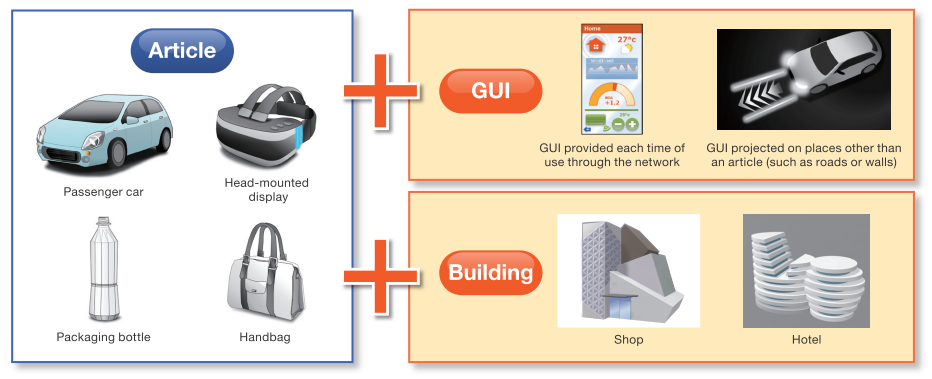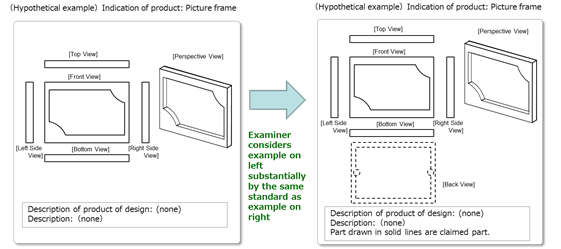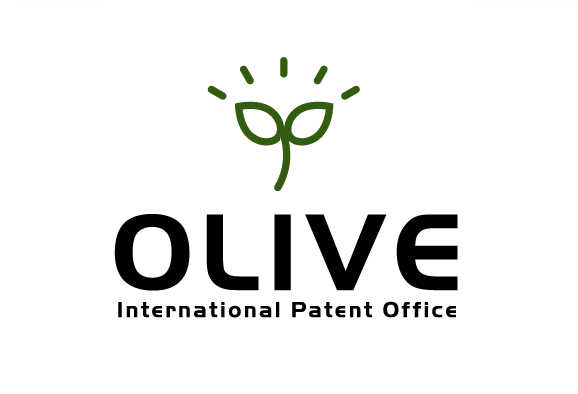FAQ
- PATENT
- DESIGN
- TRADEMARK
PATENT
Unfortunately, there is basically no remedial measures.
For the following procedures, however, remedial measures are available only if there is a “legitimate reason”.
– Submission of translations of a PCT application filed in a foreign language
– Submission of translations of an “application written in a foreign language”
– Request for examination
– Claiming a priority
The “legitimate reason” (corresponding to Due Care of the PLT, Article 12(1)) is strictly limited to damage caused by a disaster, a failure caused by an unpredictable event, or the like. If there is a “legitimate reason”, the procedure may be accepted only within two months from the date the reason is removed but no later than one year (six months for procedures for trademarks) from the passage of the period.
Further, for the following procedures, remedial measures are available only if there is a “reason beyond the person’s control”.
– Filing of an Appeal against a Rejection
– Submission of documents required for applying for an exception to the lack of novelty of invention
The “reason beyond the person’s control” is more limited than the “legitimate reason”. If an Applicant is unable to submit the document within a predetermined period due to “reasons beyond the person’s control”, the Applicant may complete the procedure within 14 days (within two months if the person is an overseas resident) from the date the reason is removed but no later than 6 months from the passage of the period.
Note that, for payment of patent fees or registration fees, the payment may be accepted together with a surcharge within a predetermined late payment period.
Please contact us if this is the case.
It is required to pay a fee of 2,100 yen per one request (a fee paid to the JPO (a separate attorney fee is necessary)) if the Request for Extension is filed before the expiration of the response term.
Even after the expiration of the response term to respond to a Notification of Reasons for Refusal has passed, a two-month extension is available by filing a Request for Extension within two months from the day after the last date of the response term. In such a case, no legitimate reason is necessary for the request. However, in a case of requesting an extension of term after the response term to respond to the Notification of Reasons for Refusal passed, a fee of 51,000 yen (a fee paid to the JPO (a separate attorney fee is necessary)) is required. A term for filing an Appeal against a Decision of Rejection is four months from a transmittal date of the certified copy of the examiner’s decision if the applicant is an overseas resident, however, no extension is available for this term for filing an Appeal.
When the patent application in question is an application for an invention concerning pharmaceuticals or the like, it is possible to file an application to register a patent term extension in connection to the pharmaceuticals or the like (Patent Act, Article 67(4): Patent Term Extension). It is possible to file this application together with the application to register a patent term extension for compensation of the duration described above. Please contact us for details.
Accelerated Examination
[Eligible Subject]
All of the applications from foreign countries meet the requirement to file a request for accelerated examination.
[Time for Request]
Any time between the filing of a request of substantive examination and the issuance of the Notice of Allowance.
[Official Fee]
Official fee is free of charge.
[Effects]
First Office Action will be issued within three months from the request for accelerated examination.
[Required information/documents]
(1) Application number, publication number, etc. of the foreign application.
(2) Information of prior art documents and brief explanations of the comparisons between the present invention and the prior art.
∗In a case where a Search Report (SR) or Office Action (OA) has already been issued on the corresponding foreign application, submission of the contents of the Written Opinion of SR or OA is sufficient.
∗In a case where explanations of the prior art documents are described in the specification, the explanations may be cited as the brief explanation of the comparisons between the present invention and the prior art.
Note that, although Patent Prosecution Highway (PPH) is available as a system to facilitate an examination, we recommend the accelerated examination, because the PPH imposes stricter requirements and requires more documents to be submitted than the accelerated examination described above, and the effects of the PPH are the same as those of the accelerated examination.
An interview with the Examiner is carried out upon an Applicant’s request. According to the Examination Guideline for Interview, when there is a request for an interview with the examiner from the representative of the Applicant, the Examiner in charge usually accepts an interview at least once.
During the interview, it is possible to exchange opinions with the Examiner in regards to a discrepancy between the present invention and a cited invention by presenting a drafted amendment. It is therefore possible to minimize reduction in the scope of protection in overcoming reasons for refusal and thus ensure a wider scope of protection. Further, by submitting an amendment reflecting the discussion in the interview, it is possible to obtain an earlier allowance. In such a way, it can be said that the interview with the Examiner is a highly effective measure in terms of obtaining a patent right having a wide and appropriate scope of protection and obtaining an earlier allowance.
We, Olive International Patent Office, have extensive experience with the interview, and the allowance rate exceeds 90% for cases in which we conducted an interview with the Examiner.
What countermeasures are available for extinguishing a specific patent right in Japan?
It is possible to submit third-party observation on an anonymous basis.
Opposition to a granted patent and Trial for patent invalidation are available.
(i) Opposition to a granted patent
It is possible to file an opposition to a granted patent within six months from the issuance date of the Patent Publication Gazette. If the opposition to a granted patent is filed, the JPO reexamines the propriety of the allowance. If the opposition is successful and thus a revocation decision of the patent right is rendered, the patent right lapses retroactively.
The opposition to a granted patent is advantageous in terms that it is possible to file the opposition through a strawman.
(ii) Trial for patent invalidation
Even after six months passed from the issuance date of the Patent Publication Gazette, it is possible to file a trial for patent invalidation. The trial for patent invalidation can be filed not only in the duration of the patent right but also even after expiration of the duration of the patent right. If the trial of patent invalidation is filed and a trial decision of invalidation of the patent right is rendered, the patent right lapses retroactively.
An interested person for the patent right is eligible to file the trial of patent invalidation.
Reference link:
https://www.jpo.go.jp/system/process/tesuryo/genmen/genmen20190401/document/index/leaflet_e.pdf
(1) In a case of claiming a priority under the Paris Convention to file a patent application to Japan
In such a case, it is possible to submit Japanese translations within one year and four months from the priority date by submitting a document written in a foreign language (including languages other than English) and the like to the JPO within one year from the priority date. Further, if the Japanese translations are not submitted within one year and four months from the priority date, a notification that translations have not yet been submitted will be issued from the JPO, and it is possible to submit the Japanese translations within two months from the notification.
(2) In a case of entering the application into a national stage of Japan based on a PCT application
Since the term for entry is not 31 months, it is usually required to submit Japanese translations of the specification and the like of the international patent application to the JPO within 30 months from the priority date. However, if the national document is submitted during 28 to 30 months from the priority date, it is possible to submit the Japanese translations to the JPO within two months from the date of submission of the national documents. Therefore, when there is no sufficient time for preparing the Japanese translations before the time limit for entry to Japan (30 months from the priority date), it is desirable to first submit national documents by the date of entry to Japan and then submit the Japanese translations to the JPO within two months from the submission of the national documents.
DESIGN
When:
(1) filing an Amendment and/or an Argument against a Notification of Refusal issued by the JPO in a case of an application based on the Geneva Amendment Agreement in the Hague Agreement,
(2) filing an Appeal against a Rejection,
(3) applying for a record of transfer of a design right, applying for a record of change of a registered owner, or the like, and
(4) filing a procedure of withdrawal of an application for design registration or waiver of a design right.
(1) Subjects of protection
GUIs and buildings were added to the subjects of protection by the revision in 2019. Although the subjects of protection covered by design rights had been limited to articles in Japan, the above addition was made to protect images not recorded/displayed on products and protect the design of buildings that are real estates. In addition, interior designs were also added to subjects of protection. (Date of enforcement: April 1, 2020)


Source: “Revision of the Design Act in Japan, Contributing to innovation and branding -Revised in 2019-” (JAPAN PATEN OFFICE (JPO), November, 2019)
(2) Date of expiration of a design right
The date of expiration of a design right was changed by the revision from “the date after 20 years from the date of registration” to “the date after 25 years from the date of filing the application”. (Date of enforcement: April 1, 2020)
(3) Application for multiple designs
“Collective application containing multiple designs” will be possible by the revision in 2019. Conventionally, it was required to prepare application requests on a design basis to stick to “principle of one design per one application” in applications for design registration in Japan. However, when “Collective application containing multiple designs” is adopted, it will be possible to file an application request containing multiple designs to the JPO. (Date of enforcement: April 1, 2021)
According to the revision of Design Act in 2019, subjects of protection were expanded as described above, and various systems such as the related design system were changed, which makes the revision noteworthy.

(Source: JPO Website:https://www.jpo.go.jp/e/system/laws/rule/guideline/design/shinsa_kijun/overview_20190501.html)
TRADEMARK
(1) A one-month extension is available by filing a request for extension before the first due date for responding to the Provisional Refusal, i.e., within three months from the date of the Notification of Provisional Refusal.
(2) A two-month extension is available even after the due date for responding to the Provisional Refusal. In such a case, a request for extension must be filed within two months from the due date for responding to the Provisional Refusal.
(3) A three-month extension in total is available by filing the above requests (1) and (2). In such a case, a request for a two-month extension (i.e., the above request (2)) must be filed within two months from the one-month extended due date.
Specifically, all goods and services are classified into a “Subclass” in each international class, and the “Subclass” is the same as “Similar Group Code”. During examination, goods or services identified by the same “Similar Group Code” are basically deemed to be similar to each other. In other words, the Examiner would not deem the goods or services having the same “Similar Group Code” as dissimilar.
(1) Similar group codes for goods and services (similar group codes are indicated in parentheses)
Class 16 Books (26A01)
Class 24 Towels (17B01)
Class 41 Educational services (41A01)
Class 44 Medical practices (42V02)
(2-1) Similarity between goods or services in the same classification
Similar: Class 16 Books (26A01) vs Class 16 Newspaper (26A01)
Dissimilar: Class 16 Books (26A01) vs Class 16 Pencils (25B01)
(2-2) Similarity between goods or services in different classifications
Similar: Class 14 Jewelry case (20A01) vs Class 20 Furniture (20A01)
Dissimilar: Class 14 Jewelry case (20A01) vs Class 16 Pencils (25B01)
As indicated in (2-1) and (2-2), the same similar group code may appear not only in the same classification but also across different classifications
Q3-1. What is the Reason for Refusal under the main paragraph of Article 3(1)?
Q3-2. What countermeasure can be taken against this Reason for Refusal?
Requirement (1)
Regarding services such as retail services, multiple services such as retail services not in a relationship of similarity are designated. Basically, services such as retail services across multiple similar codes are designated from similar group codes (35K01 to 35K99) in connection to services such as retail services.
Requirement (2)
Goods or services across 23 or more similar group codes are designated in a single class.
A3-2. The following three countermeasures may be considered.
(1) File a document that proves the fact of use of the trademark in Japan. For example, the fact of use is proven by the following items:
– A website describing the merchandise of the Applicant or the like
– A printed material such as a leaflet, a flyer, or the like describing the merchandise of the Applicant or the like
– Photographs of a shop operated by the Applicant or the like and the interior of the shop in which the merchandise is recognized
– A transaction document (an order form, a statement of delivery, an invoice, a receipt, or the like) in which the merchandise of the Applicant or the like is recognized
– An article in a newspaper, a magazine, or a site on the Internet in which the business operation or the merchandise of the Applicant or the like is introduced
– A material showing the sales proceeds of a good in connection to a service such as a retail service (in a case of a service of a general retail store or the like)
(2) File documents that prove an intention of use of the trademark in Japan. For example, file a document explicitly indicating that the Applicant or the like has an intention of starting the use of the trademark in three to four years after the application and a document showing the preparation status of the planned operation.
(3) File an Amendment to cancel a designated good or a designated service so that neither the above requirement (1) nor (2) is met.
When:
(1) filing an Amendment and/or an Argument against a Notification of Provisional Refusal in a case of an application based on the Madrid Protocol,
(2) filing an Appeal against a Rejection,
(3) applying for a record of transfer of a trademark right, applying for a record of change of a registered owner, or the like, and
(4) filing a procedure of withdrawal of an application for trademark registration or waiver of a trademark right.
(i) Accelerated examination
An application satisfying predetermined requirements (for three cases (1) to (3) below), such as “the applied trademark has already been used for a designated good or a designated service”, is eligible for an accelerated examination provided that the applicant files a statement indicating an intention of utilizing the accelerated examination. An examination result will be given in around two months from the application for accelerated examination. (Results will be given in around 11 months in the case of a normal examination.)
Note that an international trademark application under the Madrid Protocol is not eligible for an accelerated examination because of a difference in examination procedures and the like.
Case (1): Some of filed trademarks are already in use and there is an urgent need to acquire trademark rights.

Case (2): All of filed trademarks are already in use.

Case (3): Some of filed trademarks are already in use and only goods or services listed in “Examination Guidelines for Similar Goods and Services”, “Enforcement Regulations of the Trademark Act”, or “International Classification of Goods and Services (Nice Classification)” are designated.

Source: JPO website “Outline of Accelerated Examinations and Accelerated Appeal Examinations for Trademarks”
https://www.jpo.go.jp/system/trademark/shinsa/soki/shkouhou.html
(ii) Fast track examination
The fast track examination is to issue a first examination result for a case satisfying predetermined requirements earlier than the normal examination.
The first examination result for an application satisfying the requirements for the fast track examination will be given in around six months from the application (estimate at February, 2020).
Cases eligible for the fast track examination are those satisfying the following (1) and (2).
(1) Applications for trademark registration which designate only the goods or the services listed in “Examination Guidelines for Similar Goods and Services”, “Enforcement Regulations of the Trademark Act”, or “International Classification of Goods and Services (Nice Classification)” at the time of the application
(2) Applications for trademark registration whose designated good(s) or designated service(s) has not been amended before the start of substantive examination
Unlike the accelerated examination, the fast track examination does not require any additional application, because an application satisfying the above requirements is automatically regarded as an eligible subject for the fast track examination. No additional fee paid to the JPO is necessary.
Source: JPO Website “Fast Track Examination”
https://www.jpo.go.jp/system/trademark/shinsa/fast/shohyo_fast.html

